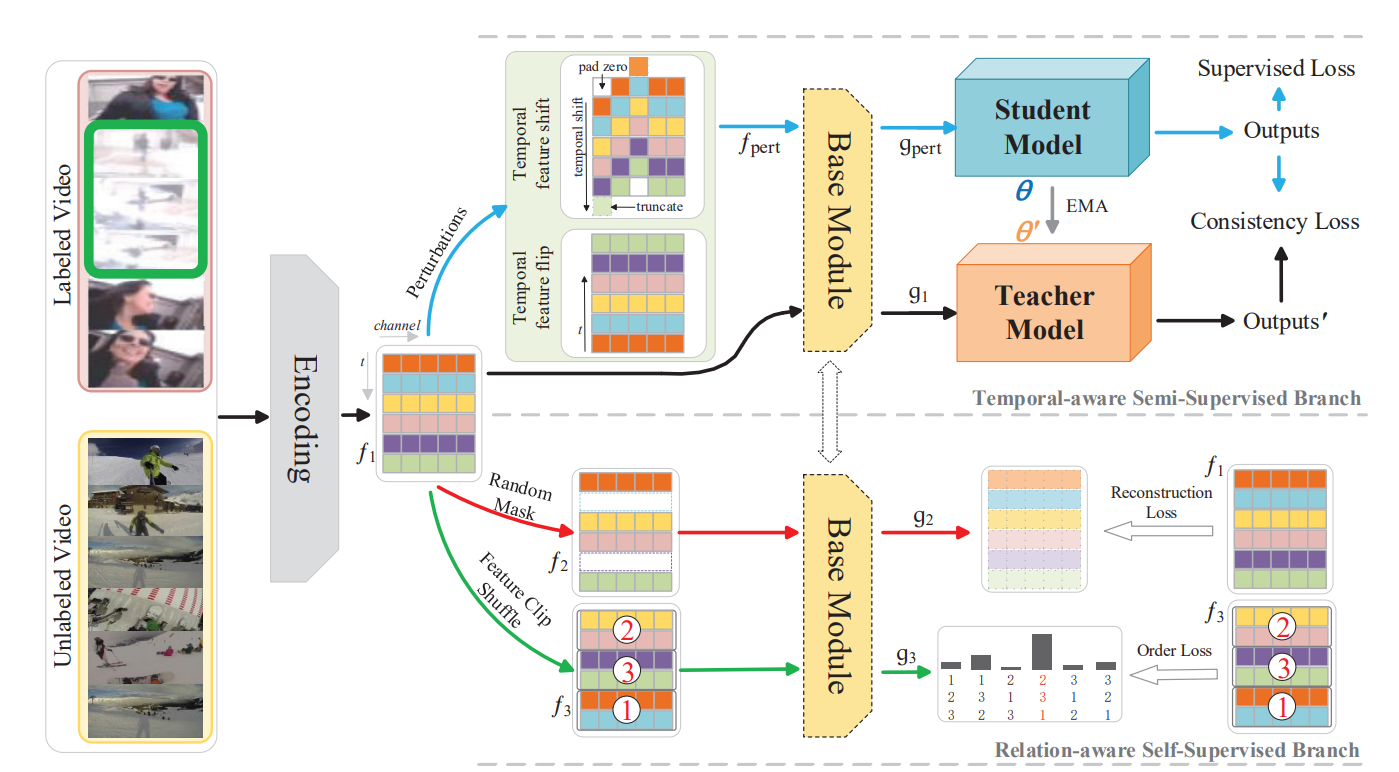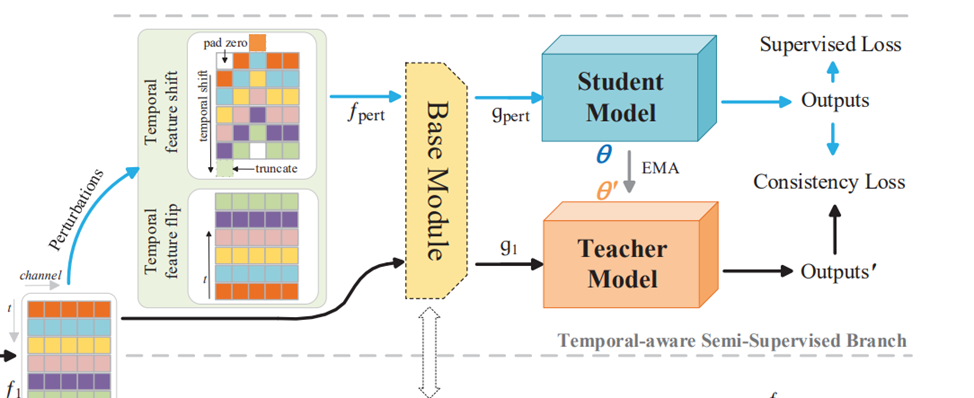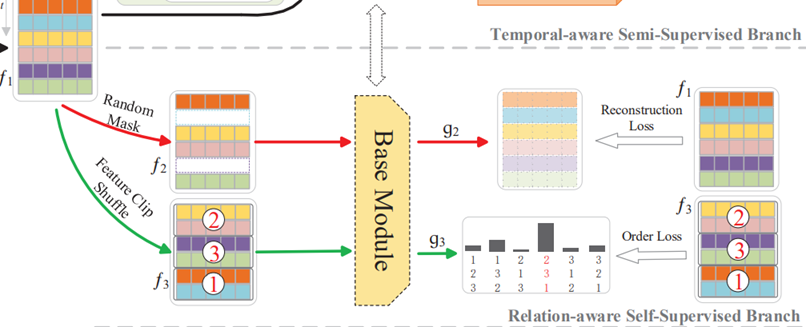Self-Supervised Learning for Semi-Supervised Temporal Action Proposal
论文使用自监督的方法来改造半监督行为建议区域生成。
作者专门设计了一个Self-supervised Semi-supervised Temporal Action Proposal (SSTAP) 网络结构,后面简称SSTAP。SSTAP包含两个分支temporal-aware semi-supervised branch 和relation-aware self-supervised branch,简单理解就是一个半监督分支和一个自监督分支。半监督分支是加入特征偏移和特征翻转在the mean teacher frame-work上,自监督分支则是定义了两个任务masked feature reconstruction 和 clip-order prediction
如何实现

1.Problem Description
问题的定义是,给一段未裁剪$S={sn}^{ls}{n=1}$,假设它的长度为$ls$,论文的方法的目标是在视频示例片段$\varphi_p={\xi_n=[t{s,n},t{e,n}]}^{M_n}{n=1}$检测出动作,其中 $Ms$是动作实例的总数,$[t{s,n},t_{e,n}]$ 分别表示动作实例$\xi_n$的起点和终点
2.Feature Encoding
特征提取部分。给一段未裁剪$S={sn}^{ls}{n=1}$,假设它的长度为$ls$,我们首先将其划分为不重叠的短片段,每个片段包含 $\sigma$帧,然后采用双流网络(RGB或者Flow)提取视觉特征序列$\phi={\phi{tn}}^T{n=1}\in\mathbb R^{T\times C}$,其中$C$是特征的维度,而$T=l_s/\sigma$。
其实就是一个监督的特征提取。
3.Temporal-aware Semi-Supervised Branch

半监督分支当中主要有两个点,mean teacher framework和扰动,这部分是在BMN网络上进行修改
4.Relation-aware Self-Supervised Branch
